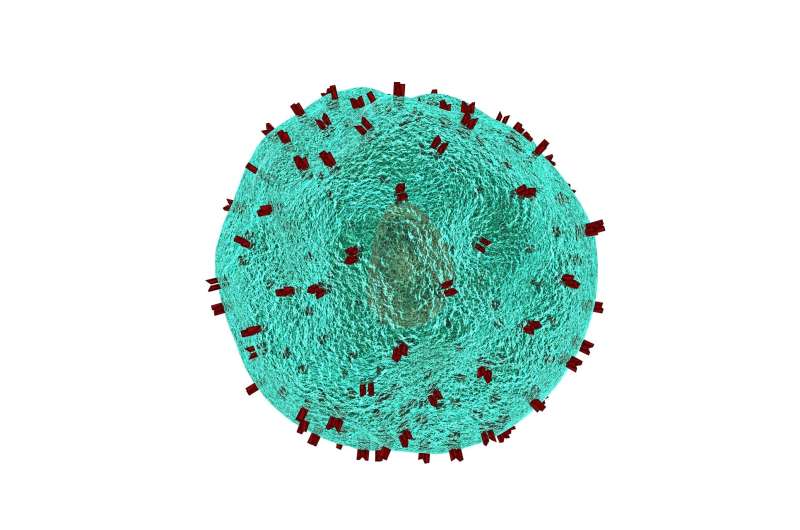HIV treatment helps prevent active TB


Antiretroviral treatment (ART) reduces the risk of developing active tuberculosis (TB) in people also infected with HIV-1, by dampening the activation of the body’s immune response. These findings could help improve treatment for both conditions in the future.
TB remains to be the leading bacterial cause of death worldwide and co-infection with HIV is the biggest risk factor for developing an active infection. But it’s been observed that people taking ART are less likely to have a latent TB infection become active and potentially life threatening.
Researchers at the Francis Crick Institute and the Wellcome Centre for Infectious Diseases Research at the University of Cape Town, have been researching links between the two conditions for a number of years. In their latest study, published today (Friday) in Frontiers in Immunology, they took a 3-step approach to unpicking the connection.
Firstly, the team carried out a broader analysis of blood from individuals with both latent TB infection and HIV-1, during their first six months of ART. They observed a significant drop in the inflammatory signaling activity of immune cells. This was also confirmed by further analysis of plasma samples taken after six months of ART, which showed a decrease in the presence of inflammatory markers.
In the final step, the researchers focused in on 30 patients and carried out highly detailed multiplex analysis of their blood plasma to better understand the change in inflammatory markers. They found a consistent decrease in IL-1alpha and IL-1beta concentrations over time.
Collectively, their results show that the decreased risk of active TB can be explained by reduced inflammatory immune responses during treatment with ART.
Katalin Wilkinson, Principal Laboratory Research Scientist at the Crick and the University of Cape Town, and first author of the study, said: “Our study highlights the additional benefits of ensuring people with HIV get access to ART, especially in countries where prevalence of both infections is much higher.
“Now that we understand the biological mechanisms behind this connection, we can better inform treatments and prevention strategies for both conditions.”
This research project gained momentum after Katalin took the idea to the Crick data challenge, which brings together researchers from across the institute with experts from our Bioinformatics and Biostatistics and Scientific Computing Platforms in a hackathon-style event. She then presented early data at the institute’s annual Autumn Science Meeting, leading to more groups and facilities at the Crick lending their support and expertise.
The team will continue exploring the biology behind HIV and TB co-infection, including an interesting phenomenon they spotted as part of this study. They plan to look in more detail at an observed increase in the heme metabolism pathway, that could be linked to the endothelial disfunction (narrowing of large blood vessels on the heart’s surface) associated with HIV infection, as well as the increased risk of cardiovascular disease among people taking ART.
Robert Wilkinson, Group Leader of the Crick’s tuberculosis laboratory, said: “Our increased understanding of TB in people who also have HIV, could lead to improved treatments for both conditions.
Source: Read Full Article